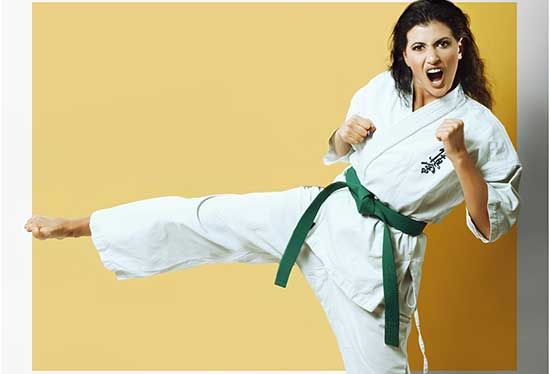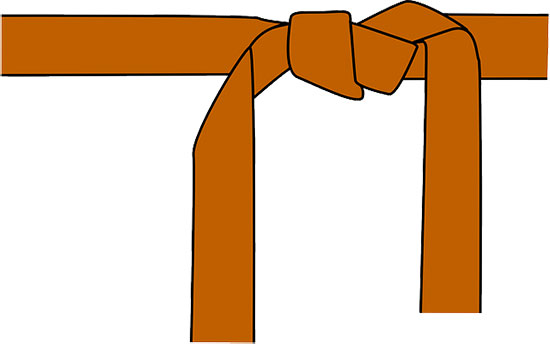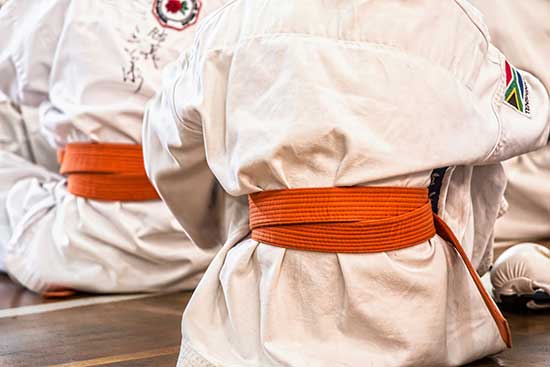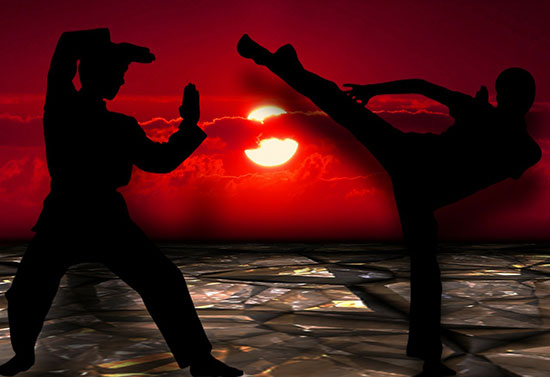When attacked, you need a clean set of defense skills to protect yourself; everything is about survival.
That requires proper martial arts training to become more familiar with the art. Nevertheless, you may not always perfect your skills for defense but honor the craft.
Jeet Kune Do usually involves survival training and is technically a way of life rather than a fighting style.
On the other hand, Karate is a martial art that follows specific fighting rules and has a properly defined style.
This Jeet Kune Do vs. Karate guide outlines the nuances and compares the two to help you decide which to go for.
Contents
Differences Between Jeet Kune Do Vs. Karate
Jeet Kune Do is a philosophy and idea that mainly equips individuals with the skills they need to conquer fights.
It’s a fighting technique that’s primarily practical in street combat, and combining it with other styles like Fang Gung Fu creates a hybrid that makes you invincible.
Jeet Kune Do isn’t a so-organized technique, unlike other fighting techniques, and is typically instinctual and adaptive to the opponent’s fighting style.
On the other hand, Karate is a Japanese combat style with clear rules and defined moves. It’s a rehearsed martial art technique that has existed for centuries, unlike Jeet Kune Do, an idea that Bruce Lee developed.
Karate is more constraining and doesn’t give you the freedom to choose your best version to survive a compromising moment.
However, it’s a deadly technique that, when you master it, no one could ever come close to.
Some of the technical differences between Jeet Kune Do and Karate include:
Moves
Karate is a defined style with choreographed movements that fighters must rehearse and use. On the other hand, Jeet Kune Do is a fighting philosophy rather than a style, and fighters learn to use various practical defense and offense techniques that get them out of trouble in street fights.
Adaptivity
When using Karate, your opponent doesn’t define your fighting style. You usually stick to the confines and guiding principles of the art, offending and defending by the rules.
Conversely, Jeet Kune Do uses a little bit of Wing Chun, a martial art technique that involves studying your opponent and curating your fighting style, using it against them.
Strategy and Straightforwardness
Jeet Kune Do is more strategic and straightforward than Karate. It cuts all the flashy stuff and only focuses on equipping fighters with the skills they need to win a fight.
Unlike Karate, Jeet Kune Do is more simplified and straightforward, making it a more efficient martial art.
History
Of course, history in a martial art is pretty significant; each technique has a track of use at some point. Karate is a sport and a mainstay in martial arts.
It was first practically used in Japan in the 1920s and has become one of the most institutionalized martial art.
On the other hand, Jeet Kune Do is a contemporary art that the martial art icon Bruce Lee invented in 1967 and hasn’t been around as long.
| Karate | Jeet Kune Do | |
|---|---|---|
| Origin | Developed in Japan | Developed in the United States |
| Founder | Gichin Funakoshi | Bruce Lee |
| Style | Traditional martial art | Hybrid martial art |
| Principles | Focuses on self-defense, discipline, and physical training | Emphasizes practicality, flexibility, and adaptability |
| Techniques | Predominantly linear and rigid | Incorporates both linear and circular movements, emphasizing fluidity and speed |
| Philosophy | Promotes humility, respect, and self-control | importance of being adaptable and evolving to overcome obstacles |
| Training methods | Forms (kata) and sparring (kumite) | Focus pads, trapping drills, and free-flowing sparring |
| Belt system | Uses a color-coded belt system to indicate rank | Does not use a standardized belt system |
| Competition | Features various competitive events, such as sparring and forms competitions | Discourages competition and instead emphasizes individual development and self-defense |
| Weapons | Includes traditional weapons such as nunchaku, bo staff, and sai | Incorporates weapons training as part of its curriculum, but with an emphasis on practical self-defense rather than traditional weapons |
Similarities
We see numerous martial art techniques every day, and often, they appear more comparable and share a few similar streaks.
Jeet Kune Do and Karate aren’t exceptions since they have a few similarities that compare them to the typical forms of martial arts.
Here are the similarities between Jeet Kune Do you should know about.
Both Styles Are Offensive
It’s okay to compare Jeet Kune Do and Wing Chun for their less offensive approaches. However, unlike Wing Chun, Jeet Kune Do is as offensive as Karate is.
While the Jeet Kune Do borrows the adaptive principles from Wing Chun, it’s more vicious, and the fighter can assault the opponent depending on how they approach the fight.
Both Styles Are Practical in Defense
The entire martial arts discipline helps fighters be more skilled when defending themselves from attacks. In that sense, both techniques are ideal for defense, whether in arenas or street fights.
What to Choose?
Choosing between Jeet Kune Do and Karate aren’t so challenging as the two wage differently in martial arts. The former is simpler and straightforward to help you win a fight.
The latter is rehearsed and choreographed and involves using defined moves and techniques. Jeet Kune should be your ideal option if you’re to see the next day and survive a vicious fight.
However, if you want to master the art of fighting and be well-rounded with the techniques, Karate should be your best choice.
Conclusion
The Jeet Kune Do vs. Karate debate is an easy one to settle. The former isn’t so well defined as a martial art style but a philosophy that helps fighters use what they have to win a fight.
However, Karate has been institutionalized, and fighters use it while abiding by its rules. Either should depend on how exactly you want these fights to help you.





